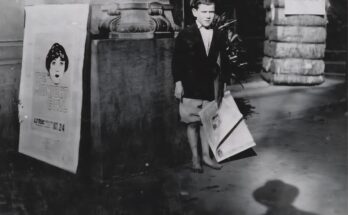Abraham Feiler was a Polish Jew born in the historic city of Cracow (Kraków), a center of Jewish life, culture, and scholarship in Poland for centuries. As a tailor, Abraham was likely a skilled craftsman, practicing a trade that was not only practical but deeply rooted in the Jewish communities of Eastern Europe. His work would have supported local families, perhaps even passed down through generations. Before the war, Jewish tailors like Abraham were common in cities like Kraków, running small shops or working in workshops, playing a vital role in everyday urban life.
When Nazi Germany invaded Poland in September 1939, Kraków fell under German occupation, and the lives of its Jewish residents were thrown into chaos. The German authorities quickly imposed brutal anti-Jewish measures: Jews were forced to register, wear identifying armbands, give up their businesses, and eventually move into ghettos. Abraham, like thousands of others, would have been confined to the Kraków Ghetto, a place marked by severe overcrowding, food shortages, disease, and constant terror. Despite these conditions, many tried to carry on with life and maintain their dignity through work, family, and faith.
On 24 February 1942, Abraham Feiler was deported to Auschwitz, the notorious concentration and extermination camp located in Oświęcim, not far from his hometown. He was registered under the prisoner number 25202. This transport came during a time when Auschwitz was rapidly expanding as both a labor camp and a center for mass murder. Jewish deportees, especially from nearby cities like Kraków, were being sent in increasingly large numbers as part of the Nazis’ “Final Solution.”
Tragically, Abraham’s time in Auschwitz was brutally short. He perished just three days later, on 27 February 1942. His death so soon after arrival suggests that he may have been murdered upon entry or succumbed almost immediately to the cruel conditions and abuse of the camp. Many Jewish prisoners were deemed unfit for labor as soon as they arrived and were executed in the gas chambers. Others died quickly from exposure, starvation, beatings, or untreated illnesses. For a middle-aged man or elder, especially one weakened by months in the ghetto, survival was often impossible.
Auschwitz in early 1942 was a place of indescribable suffering. The camp authorities operated with a policy of calculated cruelty. Even skilled workers like tailors were not guaranteed survival. In fact, by that stage of the Holocaust, survival depended more on arbitrary selection, physical condition, and sheer chance than on a person’s usefulness. Abraham’s death, coming just 72 hours after his registration, is emblematic of how quickly and efficiently the Nazi regime sought to erase human lives.
Despite the brevity of his time in Auschwitz, Abraham Feiler’s memory survives through the fragmentary yet crucial camp records that bear his name and number. While the Nazis tried to reduce their victims to statistics and numbers, postwar historians and memorial institutions work to restore the personal stories behind those numbers. Abraham was not simply prisoner 25202—he was a man, a tailor, a resident of Kraków, a member of a once-thriving Jewish community now decimated.
The tragedy of Abraham’s life and death is part of the larger, horrific chapter of the Holocaust, in which over three million Polish Jews were murdered. Yet by remembering individuals like him, we refuse to let their identities be erased. His skills, his birthplace, and even the exact date of his murder are a testament to his existence and the cruelty he endured.
In commemorating Abraham Feiler, we remember not only a victim of Auschwitz but a piece of Poland’s lost Jewish world. His story is a reminder of the importance of memory and the responsibility we bear to preserve the human face of history in the face of dehumanization and genocide.


